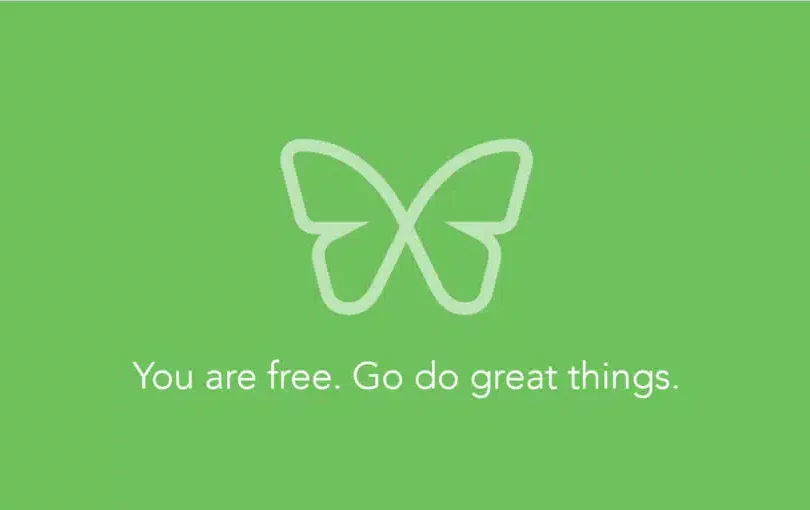Flow State: How To Find Flow and Happiness in Your Work and Beyond

What exactly is flow state and why do so many people rave about its benefits?
One of my favorite places to write is at a corner table in a coffee shop just a few minutes from my home.
There is something about the combination of the smell of coffee, the din of the cafe, and tucking one leg under me on the bench seat that puts me in the right frame of mind.
Time just seems to fly by. I’ve been jarred more than once by the reminder alert that it was time for school pickup, realizing that the hours had passed in a flash.
That’s why this spot works for me. It helps me get in the flow.
But what exactly is a flow state, and why do so many people rave about it?
This article will examine the flow state and its components to help you learn how to attain and maintain a flow state for better productivity and happiness.

What Is a Flow State?
The flow state theory was identified and named by psychologist Mihály Csíkszentmihályi in the 1970s.
Along with co-founder of positive psychology Jeanne Nakamura, Csíkszentmihályi investigated how people can continue to perform well and for enjoyment even when they are not rewarded externally. Their study started with highly accomplished individuals, from surgeons to dancers, and then covered a wide variety of people.
The psychologists discovered that people, regardless of class, culture, age, or other qualifiers, find happiness not in leisure or relaxation, but in experiencing the most intense moments of being engaged in an activity.
“Flow” describes this state of intrinsic motivation that occurs when one is entirely focused on a task and output flows easily.
A 2016 research study defines flow as:
“the psychological mental state of a person who is immersed in an activity with energized concentration, optimal enjoyment, full involvement, and intrinsic interests, and who is usually focused, motivated, positive, energized, and aligned with the task at hand.”
Essentially, when you are so focused on your task that you completely forget everything else, time slows down, and your work flows effortlessly, you are in a flow state of mind.
This is also referred to as getting in the zone, and it’s all the rage in the productivity world.
When you are so focused on your task that you completely forget everything else, time slows down, and your work flows effortlessly, you are in a flow state of mind.
Components of a Flow State
Sometimes it may seem like we’re “in the zone” or very productive, but we are not in a flow state. To achieve flow, a combination of factors needs to be in place.
According to Csíkszentmihályi, eight components accompany the experience of flow:
- Goals that are clearly defined with immediate feedback
- A high level of focus on a specific topic
- Challenges and skills must be balanced
- A sense of control
- A feeling of effortlessness
- A change in perception of time
- Integration of consciousness and action
- An intrinsic or internal quality or motivation
The first three requirements must be met for a flow state to exist. The other factors describe how we feel when we are performing an activity in a flow state and may or may not be present at the same time.

What Makes the Flow State Optimal?
The groundbreaking 1990 book Flow: The Psychology of Optimal Experience introduced Csíkszentmihályi’s theory of the optimal experience.
In his book, Csíkszentmihályi contends that the optimal experience occurs when a person experiences a deep sense of joy from creating order in consciousness. He suggests that we experience joy when we have met a prior expectation, exceeded it, and achieved something unexpected.
My favorite aspect of the psychology of flow is that it emphasizes mindfulness. It takes a fundamental concept of daily living—being completely present in the moment—and applies it to work, making it more enjoyable. Being in a flow state requires being fully present, focusing entirely on one task, and observing your work with a sense of calm and enjoyment.
Being in a flow state requires being fully present, focusing entirely on one task, and observing your work with a sense of calm and enjoyment.
Benefits of the Flow State
The benefits of reaching flow extend beyond simply making work more enjoyable. Here are a few of the advantages:
- Increased creativity. It’s pretty common to experience flow states while doing creative tasks, encouraging deeper creative and artistic motivation.
- Enhanced performance. Research has demonstrated that flow states can boost performance and productivity in many areas, including sports, learning, and the arts.
- More satisfaction and fulfillment. We are more satisfied with what we are doing in a flow state, so we find it more enjoyable. Having fun with a task makes it more rewarding and fulfilling.
- Continued learning and development. Flow indicates mastery of a skill, so we must continue to look for new challenges and information to stay in flow.
- Higher levels of happiness. There is evidence that flow states are associated with elevated levels of happiness and satisfaction. A flow state induces a feeling of fulfillment and well-being that is long-lasting.
What Is the Science Behind the Flow State?
So what exactly is happening in there to create this magical state?
Apparently, Csíkszentmihályi was onto something when he coined “the flow.” Neurobiologically, our brains change in a way that facilitates mental flexibility.
As we enter a flow state, our attention becomes more focused. Our slower, energy-draining conscious thought is exchanged for faster, more efficient subconscious thinking. Transient hypofrontality is the term for this phenomenon. It is one of the main reasons we feel “flowy.” Our higher cognitive abilities are disengaged, and the mental processes that might hinder us from making quick decisions are disabled. The situation is somewhat dreamlike.
Additionally, functional magnetic resonance imaging (fMRI) of people in flow states has shown that self-monitoring activity in the dorsolateral prefrontal cortex is suppressed during these states. We become more creative when we silence our inner critic and are free of self-judgment.
You can also find plenty of pleasure-producing chemicals in a flow state, such as endorphins, serotonin, dopamine, and norepinephrine. These enhance all areas of performance, especially attention, pattern recognition, and lateral thinking —the “three horsemen of rapid-fire problem-solving,” as Time described them.
Bringing these three significant neurobiological changes together, we enter a state of effortless, enjoyable, and free-flowing brain activity. How neat is that?

How Does the Flow State Look in Action?
You might be thinking, “Wow, that’s cool! But how does this actually work?”
We can enter a flow state at many different times and in many different ways. The flow state is found at work, in everyday situations, and when performing other activities, such as sports or art. Here are a few ways a flow state might take shape.
Getting Into the Flow at Work
- Writers. Do you remember my story at the beginning of this article? Writers who really enjoy sharing a topic can quickly lose themselves in their own thoughts and slip into a flow state. When I am writing something I enjoy, it is nearly impossible for me to keep track of time!
- Artists. Similarly, a painter who gets in the groove might find that their brush strokes lull them right into a flow state, making time pass as smoothly as the paint on their canvas.
- Knowledge workers. Anyone whose job it is to “think for a living” can find themselves entering a flow state regularly at work. Workers engaged in tasks where they can concentrate entirely on the project can experience flow.
Using the Flow in Other Areas of Life
- Education. Csíkszentmihályi suggested that people who “overlearn” skills or concepts can experience a flow state. Students can achieve the flow by challenging themselves at goals slightly outside their skill level, thus stretching their minds to reach more.
- Sports. Athletes can reach flow states by pushing themselves slightly beyond their limits in an achievable yet challenging way. When athletes are in flow, they may lose their self-consciousness and become more confident in their abilities.
- Meditation and prayer. This one is pretty self-explanatory. When you focus your mind on your meditation or prayer, you can enter a state of flow. According to Headspace, “a mind that is trained to be more present and at ease with itself — calmer, clearer, and content — is more likely to experience the flow state because we are training in non-distraction and focus.”

What Are Some Ways To Enter a Flow State?
So what is the secret to achieving this magical state? Do you need to learn a spell or do a special meditation to reach it?
Not at all. It is relatively easy to get into a flow state, and achieving it is not complicated or mysterious. The following tips can help you find your flow:
- Focus on what you love to do. This cannot be stressed enough. Getting into the flow is easy when you are doing what you enjoy. Take a moment to remember the last time you did something you really loved—I bet you barely noticed the time passing.
- Make it challenging, yet not too difficult. Your task should be challenging enough to keep your full attention without being overwhelming. A simple job will be completed quickly and without much effort. However, a difficult task will prevent you from entering a flow state since the effort required is too much.
- Recognize your peak productivity times. Make notes and learn what times of the day you are most productive. Peak productivity times are highly individual but worth discovering. You will be more likely to achieve a flow state by working on your main tasks during these times.
- Avoid distractions. Pick a place where you can work without being disturbed. Close the door and post a “do not disturb” sign if people are around. You can block online distractions like social media and other time-wasters using an app like Freedom. You will be better able to achieve a successful flow state if you reduce the potential for distractions.
- Establish a ritual. Create a custom series of actions that you perform each time you start focused work. Take a quick walk, have a special drink, or smell a particular scent. Doing something consistently will signal to your brain that it’s time to focus and enter flow mode.
- Keep at it. Every new skill requires practice. Taking each of these steps requires consistency and diligence, and you may not succeed right away. Keep trying. Learn from your failures and successes because only practice will make you better.
The ability to achieve a flow state can be very beneficial and rewarding. Work and personal life are more enjoyable, and you can be more productive, and feel happier.
Find Freedom in the Flow
The ability to achieve a flow state can be very beneficial and rewarding. Work and personal life are more enjoyable when you are in a flow state. You can perform better, be more productive, feel better, and be happier.
Use the knowledge and tips here to practice flow. Before you know it, you’ll experience the magical state that Csíkszentmihályi explained in his 2004 TED Talk:
“There’s this focus that, once it becomes intense, leads to a sense of ecstasy, a sense of clarity: you know exactly what you want to do from one moment to the other.”


